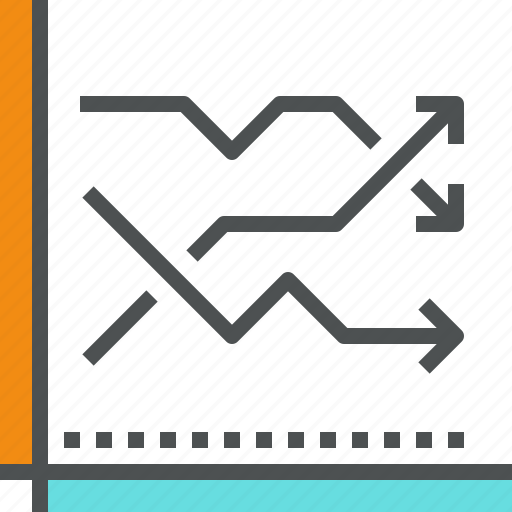Predicting Stock Prices using ARIMA
Project information
- Category: Data Analytics
- Sub-Category: Machine Learning: ARIMA, yfinance
- Client: Academic Project
- Project date: April, 2023
- Collaboration 1: Sourabh Joshi
- Collaboration 2: Fenil Patel
ARIMA Stock Price Prediction
The financial markets are characterized by their dynamic and volatile nature, making them a fascinating domain for data analysis and prediction. The advent of machine learning and time series forecasting techniques has provided investors with powerful tools to analyze historical trends and make informed decisions about stock investments. Understanding and predicting stock prices is a complex task that requires sophisticated models capable of capturing the underlying patterns in historical data. In this project, we leverage the Autoregressive Integrated Moving Average (ARIMA) model, a popular choice for time series forecasting, to predict the adjusted closing price of stocks.
Problem Statement:
The challenge of predicting stock prices resides in constructing a model that effectively navigates the intricate and dynamic nature of financial markets. These markets are influenced by a myriad of factors, including economic indicators, geopolitical events, investor sentiment, and industry trends, among others. Analyzing these complex interactions requires a comprehensive understanding of market dynamics and the ability to identify meaningful patterns and trends within vast datasets. Moreover, the inherent volatility of financial markets adds another layer of complexity, as prices can fluctuate rapidly in response to new information and market sentiment.
To address this challenge, it is essential to develop a robust predictive model capable of capturing the nuances of market behavior and providing reliable forecasts. This involves leveraging advanced statistical techniques, machine learning algorithms, and domain expertise to analyze historical market data and extract valuable insights. By identifying recurring patterns, correlations, and trends within the data, the model aims to generate accurate predictions of future stock prices. Ultimately, the goal is to empower investors and financial analysts with actionable insights that enable them to make informed decisions about buying, selling, or holding stocks, thereby navigating the dynamic landscape of financial markets more effectively.
Approach:
The approach to predicting stock prices using the ARIMA model involves a series of structured steps aimed at extracting meaningful insights from historical stock price data. The first step entails collecting historical stock price data from Yahoo Finance using the yfinance library, which provides a convenient platform for accessing financial data. Once the data is obtained, it is preprocessed to extract the adjusted closing prices, a crucial variable for stock price prediction. Subsequently, the data is divided into training and testing sets to facilitate model training and evaluation.
Following data preprocessing, the ARIMA model is constructed using the pmdarima library, which streamlines the process of parameter selection by automatically determining the optimal values for the model's parameters. This automated parameter selection mechanism enhances the efficiency of the modeling process, ensuring that the model is finely tuned without the need for extensive manual intervention. With the model parameters determined, the next step involves training the model on the training data and evaluating its performance on the testing data. Metrics such as Root Mean Squared Error (RMSE) are computed to quantify the model's accuracy and assess its effectiveness in predicting future stock prices.
Moreover, the approach includes visualizing the model predictions alongside actual stock prices to gain a comprehensive understanding of the model's performance. By juxtaposing predicted values with observed values, stakeholders can discern the model's ability to capture underlying patterns and trends in the data. Additionally, the model's capability to forecast a single value for a given date input adds practical utility to the predictive framework, allowing investors to make informed decisions based on short-term predictions. This multifaceted approach encompasses data preprocessing, model construction, evaluation, visualization, and practical application, facilitating a comprehensive analysis of stock price dynamics.
Conclusion
In conclusion, this project demonstrates the application of machine learning techniques, specifically the ARIMA model, in predicting stock prices based on historical data. By leveraging libraries such as yfinance and pmdarima, a robust predictive model was developed and evaluated. The model's performance was assessed using metrics like Root Mean Squared Error (RMSE), and its predictions were visualized for further analysis. The ARIMA model provides valuable insights for investors and analysts by forecasting future stock prices based on historical trends and patterns in the data.
The evaluation of the model's performance using RMSE allows for quantifying the accuracy of the predictions, enabling stakeholders to make informed decisions. The visualization of predicted values against actual values provides a clear understanding of the model's effectiveness in capturing the underlying trends in the data. This project contributes to the field of financial forecasting by providing a practical example of applying machine learning techniques to address real-world challenges in stock price prediction.
Based on this short-term prediction, it is suggested that selling the stocks would be prudent due to a high probability of the share price dropping in the next few weeks. However, it is essential to consider other factors such as market conditions, economic indicators, and company performance before making investment decisions. The ARIMA model serves as a valuable tool in assisting investors and financial analysts in navigating the dynamic landscape of financial markets and making well-informed decisions.
Final Prediction: Based on the analysis, I recommend selling the stocks due to the predicted drop in share price in the next few weeks.


